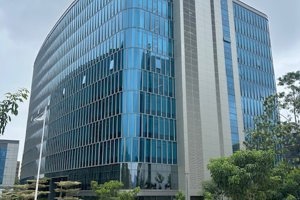From Executive Suites to Coworking and the Agile Office
It was summer of 2000 when I entered the stunning reception area of Regus’ brand-new flagship location on the 36th floor of Spear Tower in San Francisco. I gasped when I stood by the windows, watching the incredible view over San Francisco Bay, and could not believe how lucky I was to be able to call that space my workplace!
I was also lucky to start that first job in the US, right before the bust of the dotcom boom. Companies still had investors’ money to spend on big, beautiful offices: ‘we’ll move in tomorrow, here’s the deposit check’! My job was to take care of the clients helping them with any admin. I started learning words like “hanging file folder” and “binder clips” – things that weren’t part of the Finnish office world or vocabulary. Most of all, I learned about the concept of ‘executive suites’, as it was called back then. I had no idea that I would still be in the same industry 20 years later!
The dotcom boom busted and many clients disappeared overnight. We cleared offices and tried to figure out what to do with printers, monitors and other office supplies that were left behind. Management was stressed out writing off bad debts. Layoffs were completed and a couple of years later Regus filed for Chapter 11, the US bankruptcy protection.
Yet, neither Regus nor the industry (now called flex space or coworking) disappeared. Quite the opposite! In the early 2010s, WeWork made coworking cool, fashionable and, most recently, infamous. All the while multiple hardworking entrepreneurs around the world have focused on customer service and sustainable growth. Landlords and broker firms have established their own coworking sites, and the number of single-location operators has exploded. The Instant Group now tracks over 30,000 locations globally compared to 7,350 back in 2000. Today, the four largest operators make up 17% of the global market.
What has changed? What has remained?
Desks have shrunk, fax machines, desk phones, bookcases and cabinets have mostly disappeared, Internet bandwidth has multiplied and barista-style organic coffee has become a norm. Technology solutions allow smarter, healthier and more sustainable workplaces, and people are now used to booking meeting rooms on the go using an app on their phones. Shredders and printers still exist, but most importantly, the need for hassle-free, fully serviced space on flexible terms is higher than ever. Agility has become the buzz word also in real estate. In 2020, companies still want to manage risk, and space-as-a-service concept responds to that need.
My prediction for the future?
While technology has become an integral part of property and flex space industry, COVID-19 has caused us to appreciate live face-to-face interaction and a friendly smile more than ever. Those operators that excel on personable customer service, enhanced by prop tech solutions, will thrive. The concept of flexible space will still be around 20 years from now – whatever it is called at the time!


